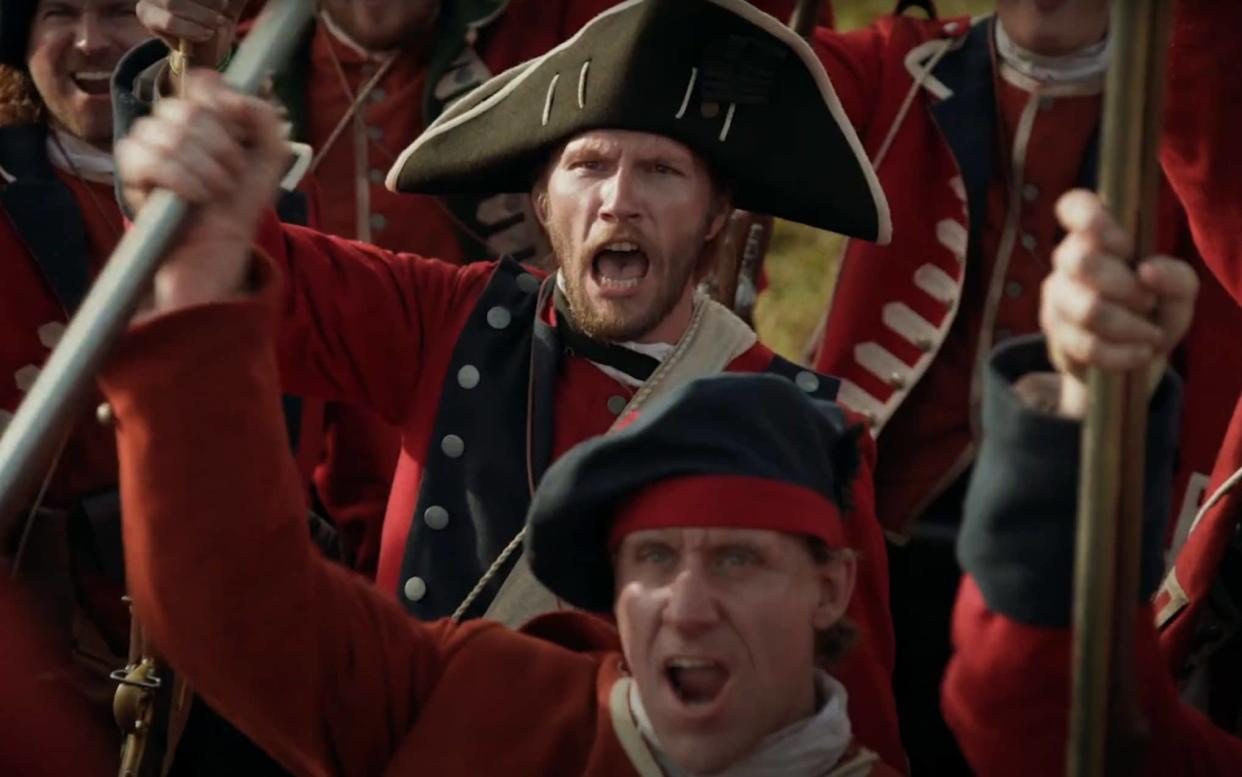WW2 fighter ace’s film dream comes true

A Second World War US fighter pilot’s dream of making a film about a British military hero of an earlier century came true shortly before his death last year aged 101.
Enabling the Hollywood production to take off was to be the final successful mission of Lt Col Amos “Hess” Bomberger, who had flown 66 missions with the 356th Fighter Group.
Based at Martlesham Heath aerodrome near Ipswich, Suffolk, he earned the Distinguished Flying Cross, among many military awards.
The film reenacts the Battle of Bushy Run, which was fought in 1763 in Pennsylvania. As a story of “heroism, self-sacrifice, faith, family, duty and honour”, it focusses on the courageous Col Henry Bouquet, who led an attack on American-Indian tribes who had threatened British forts and outposts, torturing, killing and pillaging their enemy.
With a ragtag group of British soldiers, Scottish Highlanders and American volunteers, Bouquet heroically saved hundreds of men, women and children facing certain death or worse in Fort Pitt. It was a decisive victory that determined the future of the American colonies.
Bomberger had wanted the film to be made in honour of a 1928 novel, The Battle of Bushy Run, written by his father, CM Bomberger.
Unusually for the film industry, he privately financed it, donating almost £8 million to the cause.
Titled Love, Courage and the Battle for Bushy Run, the film will be released this year. Bouquet is portrayed by Tom Connolly, a British actor making his debut in a lead role. His performance is described by the filmmakers as “charismatic and compelling”.
Historical accuracy
Solomon J LeFlore, the film’s executive producer, said that the Battle of Bushy Run is little-known yet changed the course of world history: “It is the story of a clash that defined the future of America and England… Told from the British perspective, [the film] places an emphasis on historical accuracy.”
The horrors of war had never left Bomberger. In an interview, he recalled seeing a bomber, a B-24, take a direct hit and explode into pieces: “Amidst all the pieces falling, I saw two chutes streaming down, both with guys… The chutes were on fire and smoking. They went faster and faster as the fire spread to the risers and I just had to look away. Those guys never had a chance.”
He was able to see an early screening of the film, Mr LeFlore said: “[He] was impressed by the finished film and the collaborative filmmaking process. He was also the ‘top cat’ among his elderly friends – a war hero and a movie mogul in one lifetime. Not bad at all… His father was a publisher in Pennsylvania and did very well with it. So that’s the lion’s share of how he inherited.”
Charlie Richards, the film’s screenwriter, had liaised with Bomberger in working on the production: “Hess was in his 90s when he began to seriously look into the idea of turning the story that his father obsessed over into a film. It was nearly 100 years after the book was published that the movie was completed.
“Hess spent many of his final years talking about Colonel Bouquet and his quest to save Fort Pitt in 1763. He recalled going to the site of the battle as a child and finding old arrowheads and bullets. He lived to see that story turned into a movie, visiting the set and meeting the actors who portrayed Bouquet and many of the other historical characters he loved to discuss. Although Hess died in 2023, his efforts live on in this wonderful tale, which might have been lost forever if not for his determination to see the story come to life.”


